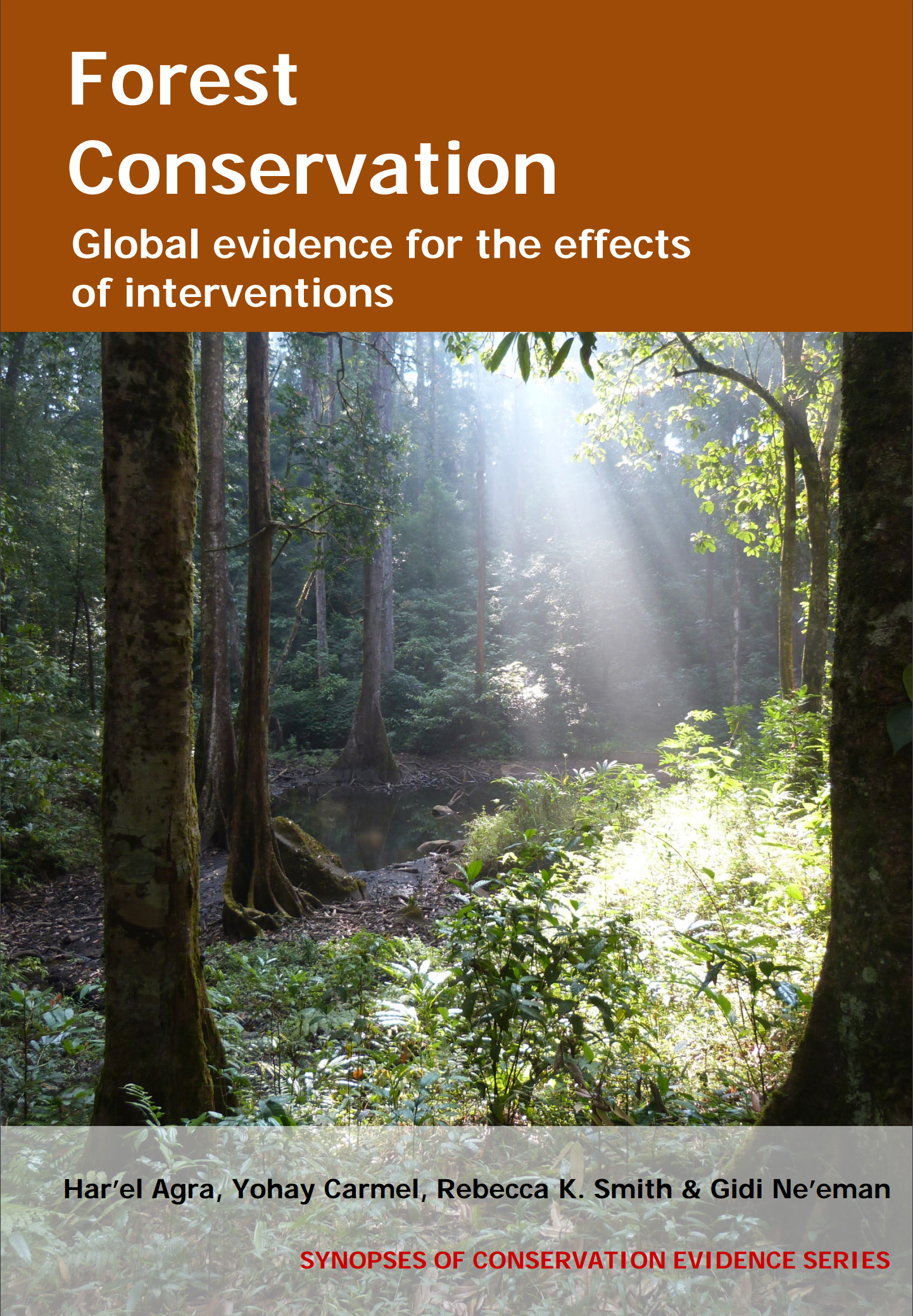Use prescribed fire after tree planting
-
Overall effectiveness category Trade-off between benefit and harms
-
Number of studies: 4
View assessment score
Hide assessment score
How is the evidence assessed?
-
Effectiveness
50% -
Certainty
43% -
Harms
20%
Study locations
Supporting evidence from individual studies
A replicated, controlled study in 2001-2008 in boreal forest in Finland (1
Den Herder, Kouki & Ruusila 2009) found no effect of burning on the height or mortality of tree seedlings. Tree heights were similar in burned and unburned plots for silver birch Betula pendula (50-70 cm), rowan Sorbus aucuparia (45-50 cm) and Eurasian aspen Populus tremula (35-40 cm), as were their mortality rates (54-55%, 8-12% and 27-30% respectively). Ten seedlings of each species were planted in 2002-2003 in each of three burned and three unburned plots (10 ×15 m). The burn treatment was applied in 2001. Data were collected in 2002-2008.
Study and other actions testedA replicated, controlled study in 1998-2006 in temperate forest in Louisiana, USA (Haywood 2009) found that prescribed fire decreased the height and basal area of longleaf pine Pinus palustris saplings. Longleaf pine height (March burn: 7.7 m; May burn: 8.7 m; July burn: 8.6 m; control: 9.1 m) and basal area/tree (March burn: 72; May burn: 94; July burn: 92; control: 116 cm2) were lowest following a burn in March, intermediate and similar following burns in May and July and highest in control plots. Data were collected in 2006 in three plots (0.07 ha) of each treatment: a burn in March, May or July (prescribed burn in 1999, 2001, 2003 and 2005), and a control (untreated since 1998) treatments. Each of the 12 plots was planted with 196 longleaf pine seedlings in 1993-1994.
Study and other actions testedA replicated, controlled study in 1999-2005 in Mediterranean shrubland in California, USA (Holmes et al. 2011) found that prescribed fire increased sprouting in planted valley oak Quercus lobata saplings without affecting mortality. The number of new shoots/sapling was higher in burned plots (summer burn: 4.6; spring burn: 4.6; control: 0.8), while the mortality rate was similar between treatments (summer burn: 3%; spring burn: 4%; control: 0%). Data were collected in autumn 2005 in 8-9 blocks (72 m2) of each of: a summer burn (in 2003), a spring burn (in 2004) and control treatments, with an average of ten oak trees/block.
Study and other actions testedA replicated, randomized, controlled study in 2005-2006 in Mediterranean Aleppo pine Pinus halepensis woodland in France (Prévosto et al. 2011) found that prescribed burning increased the survival of planted downy oak Quercus pubescens and holly oak Q. ilex seedlings. In plots with woody debris, survival of downy oak (control: <0.1; burned: 0.8 seedlings/sowing point) and holly oak (control: 1.0; burned: 2.2) was higher in burned plots. In contrast, in plots without woody debris, survival was similar between treatments for both downy oak (control: 0.0; burned: 0.2) and holly oak (control: 0.7; burned: 1.2). Grass cover was similar between treatments in plots with woody debris (control: 17%; burned: 10%) and without (control: 22%; burned: 16%). Data were collected in 2006 in 16 plots (14 × 14 m). There were four control and four burned (prescribed fire in 2005) treatment plots with woody debris scattered in the plot, and four of each treatment where the woody debris had been manually removed. All plots were thinned in 2004 (from 410 to 210 trees/ha) and in November 2006 holly oak and downy oak were planted with three acorns spaced 1 m apart at each sowing point.
Study and other actions tested
Where has this evidence come from?
List of journals searched by synopsis
All the journals searched for all synopses
This Action forms part of the Action Synopsis:
Forest Conservation
Forest Conservation - Published 2016
Forest synopsis





)_2023.JPG)














